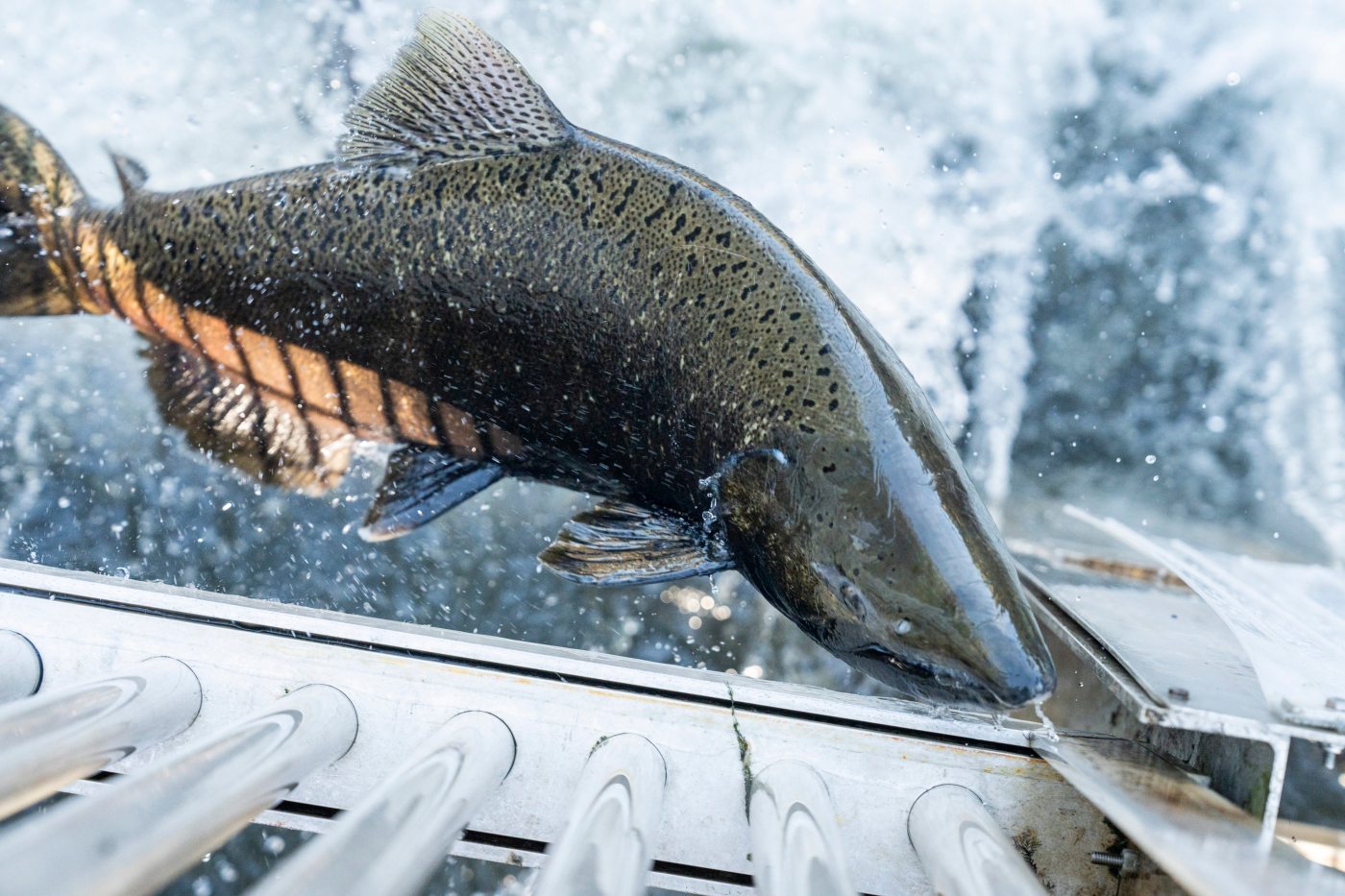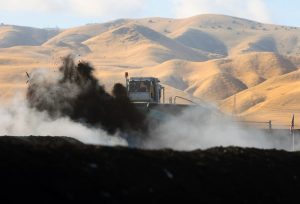For the second year in a row, a record-breaking number of Chinook Salmon have returned to the Mokelumne River — the 95-mile waterway that runs through Northern California — to spawn, signaling hope for the species’ restoration and the return of salmon fishing season in 2025.
The East Bay Municipal Utility District announced more than 30,000 fish had been recorded since September due to conservation efforts to limit commercial and recreational fishing, boost hatchery production and restore habitat along the river.
“Those fish are coming back to our river and supporting the Mokelumne,” said Michelle Workman, the East Bay MUD manager of fisheries and wildlife. “When we can use good management techniques on our river… that’s a huge win.”
Chinook Salmon leave the Pacific Ocean each fall and return to their breeding grounds in freshwater rivers, deltas and streams in one of the most arduous migrations in the animal kingdom. The Mokelumne River plays an outsized role in this process in California — while it contributes only about 3 percent of the freshwater flow into the Sacramento-San Joaquin Delta, up to half of the commercial catch of Chinook Salmon off the California coast originates from the tributary, according to East Bay MUD.
The low numbers of Chinook Salmon in recent years have forced a two-pronged restoration effort across several public agencies, Workman said. The first part is a ban on commercial and recreational fishing over the past two years by the California Fish and Game Commission, and the second is producing more fish at the Mokelumne Hatchery.
These conservation efforts have been a burden on certain sectors of the California economy, from commercial fishing operations to restaurants and fish markets, Workman said. However, he said, the results speak for themselves.
East Bay MUD biologists recorded the passage of 3,824 migrating fish on the Mokelumne River on Oct. 16, 2024, the largest one-day salmon count in more than 30 years. The total number of salmon recorded on the river this season is the highest since recording began in 1940 and is the second record-breaking year in a row.
East Bay MUD Board President Lesa McIntosh said the “historic salmon is a testament to our science-driven management” in cooperation with local, state and federal partners to support hatcheries and preserve their habitats.
Related Articles
California toddler’s backyard rattlesnake bite bills totaled $297,461
Alameda County detects bird flu in child with mild symptoms
‘Cat up a tree’ call leads to capture and relocation of California mountain lion
Monterey Bay Aquarium Research Institute discovers mystery mollusc in Monterey Bay
Should chicken hobbyist be concerned about two dead turkey vultures in a neighbor’s yard?
But conservationists’ goal is for “system-wide recovery” across the Sacramento-San Joaquin Delta, Workman said. Only when the Chinook Salmon population recovers across the river system will agencies proclaim their mission was accomplished.
“We can’t just manage the status quo year after year,” Workman said. “The way we stay on the right course is to continue to learn from each year.”
Intense weather events continue to impact the recovery of salmon populations across Northern California. Atmospheric rivers can cause salmon to get lost and wind up in places they’re not supposed to be, like Oakland’s Lake Merritt. Summer heat threatens cool river temperatures that hold more oxygenated water. And low snowpack can limit the availability of spawning ground.
Still, fishing enthusiasts can view the historic salmon run on the Mokelumne as a step toward returning to their favorite pastime. It remains unclear if the salmon fishing season will return in 2025, but Workman is optimistic.
“I’m very hopeful. I think a lot of people are very hopeful,” Workman said. “For a species like Chinook, what we really want is to have the population be resilient.”












